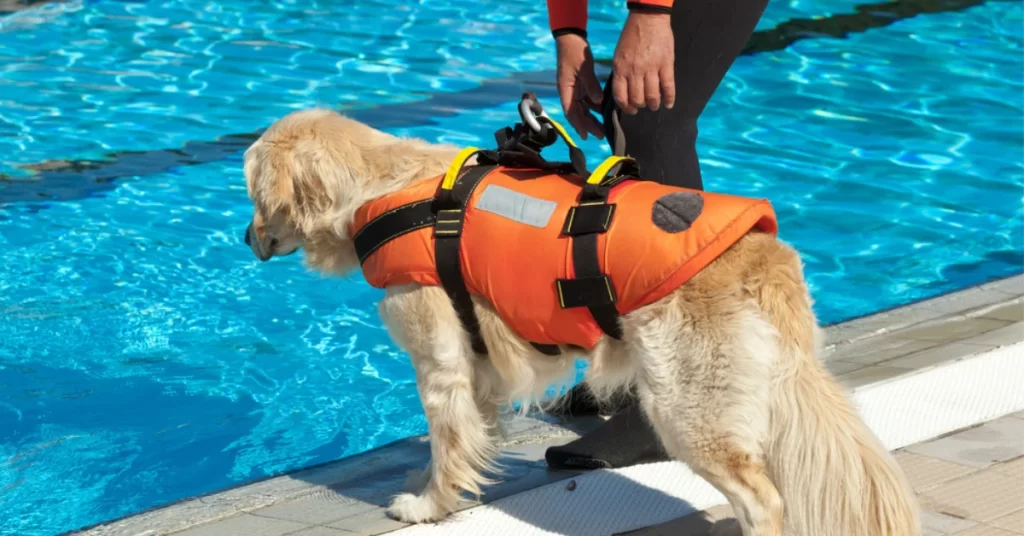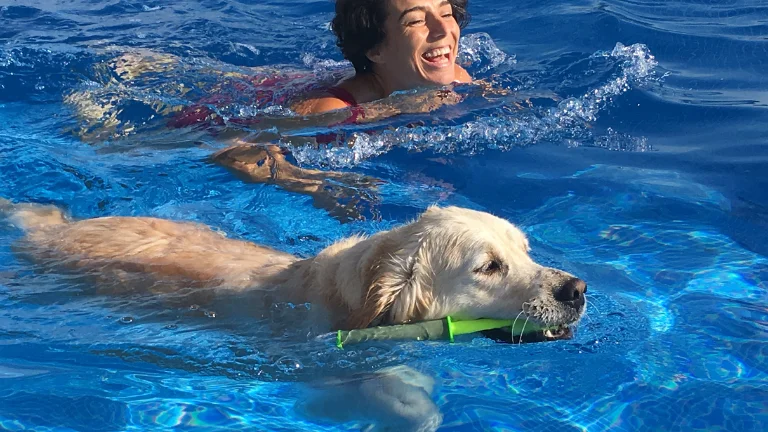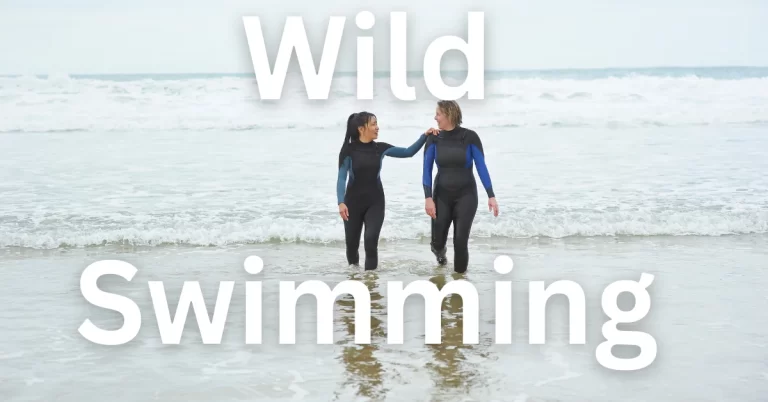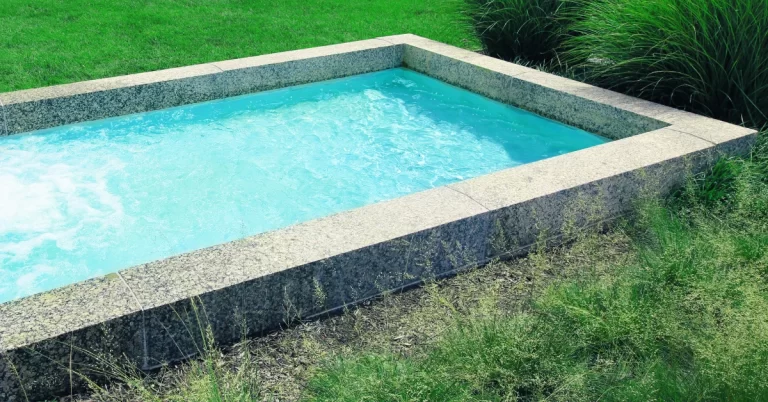New dog swimming lessons help pups enjoy the water
When it comes to delivering your furry friend with the best experiences in life, dog swimming lessons stand out as a fantastic choice. Imagine the joy of watching your beloved companion confidently paddle through the water, enjoying a new world of fun and exercise.
In this article, I will guide you through dog swimming lessons’ what, why, and how, helping you understand the benefits and process behind this exciting adventure.
Dog swimming lessons can be a great way to introduce your furry friend to the water and ensure their safety around pools, lakes, and other bodies of water. Here are some tips to get you started:
Before you start:
- Make sure your dog is healthy. Schedule a checkup with your veterinarian to ensure your dog is healthy enough for swimming lessons.
- Get the right gear. A properly fitted life jacket is essential for safety, especially for dogs new to swimming or not strong swimmers. You may also want to consider a swimming harness or leash to help you guide your dog in the water.
Introducing your dog to the water:
- Start in a shallow area. Let your dog paddle in a kiddie pool or the shallow end to get used to the feeling of being in the water.
- Use positive reinforcement. Offer treats and praise when your dog shows any interest in the water.
- Be patient. Don’t force your dog into the water. Let them explore at their own pace.
Teaching your dog to swim:
- Once your dog is comfortable in the shallow water, you can encourage them to swim. Gently splash the water before them or toss a toy just out of reach.
- Support your dog. You can help your dog feel more secure by holding them under their belly or chest as they paddle.
- Gradually let go. As your dog gets more robust and more confident, you can gradually let go of them and allow them to swim on their own.
- Practice regularly. The more your dog swims, the better they will become at it.
Here are some additional tips for teaching your dog to swim:
- Keep the sessions short and fun. 10-15 minutes is plenty of time for a swimming lesson, especially for puppies or dogs new to the water.
- Never leave your dog unattended in the water. Even the best swimmers can get into trouble.
- Be aware of the signs of distress. If your dog is paddling frantically, whining, or trying to climb out of the water, they may be tired or distressed. Take them out of the water immediately.
You can help your dog become a confident and safe swimmer with patience and positive reinforcement.
Understanding the Importance of Dog Swimming Lessons
As a responsible pet owner, you always seek ways to enhance your dog’s quality of life. That’s where dog swimming lessons come into play. Swimming offers numerous benefits that go beyond just having a good time. Here are some reasons why you should consider enrolling your furry friend in swimming lessons:
- Physical Fitness: Swimming is an exercise with a low impact that works the entire body. Like humans, dogs need frequent physical activity to support a healthy weight and keep their muscles strong.
- Joint Health: The buoyancy of water reduces the stress on joints, making it an excellent option for dogs with arthritis or joint issues.
- Confidence Building: Learning to swim boosts a dog’s confidence, helping to overcome fears and anxieties related to water.
- Mental Stimulation: Swimming engages your dog’s mind as it learns new movements and navigates the water environment.
- Bonding Opportunity: Participating in swimming lessons together can support the bond between you and your canine companion.
Why Teach Your Dog to Swim?
Discover the numerous benefits of swimming for dogs, from providing exercise and mental stimulation to promoting joint health and relaxation. Get ready to dive into a world of fun and fitness for your furry friend!
Choosing the Right Location
Explore the importance of selecting a suitable swimming location for your dog’s lessons. Learn about the ideal water conditions, safety considerations, and the best environments to make your pup feel comfortable and secure.
Introducing Your Dog to the Water
Discover how to introduce your dog to the water gradually and positively. You can help your pup overcome any initial fears and develop a love for swimming with patience and encouragement.
The Importance of Doggy Life Jackets
Explore why doggy life jackets are a must-have accessory for swimming lessons. Learn how to choose the right life jacket for your dog and understand the added safety and confidence they provide.
Basic Swimming Techniques for Dogs
Uncover step-by-step instructions for teaching your dog basic swimming techniques. From supporting them in the water to using positive reinforcement, your pup will paddle and splash in no time!
10 Essential Dog Swimming Lessons: Teach Your Pup to Master the Water!
If you want to ensure your furry friend’s safety and enjoyment in the water, teaching them how to swim is essential. Follow these ten swimming lessons to help your pup become a confident swimmer:
- Introduce Water Gradually:
- Start by introducing your dog to water in a controlled and shallow environment, such as a kiddie pool or calm lake shore.
- Positive Reinforcement:
- Use treats, praise, and encouragement to positively associate water and swimming.
- Life Jacket Introduction:
- Introduce your dog to wearing a life jacket to provide extra buoyancy and safety during swimming lessons.
- Water Entry and Exit:
- Teach your pup to safely enter and exit the water, using gentle guidance and support.
- Paw Paddling:
- Encourage your dog to paddle with its front paws while supporting its hindquarters to simulate the swimming motion.
- Floatation Practice:
- Gradually introduce your pup to deeper water while supporting them with a floatation device, helping them develop confidence and buoyancy.
- Swimming in Shallow Water:
- Allow your dog to swim in shallow water while providing support and guidance as needed.
- Building Stamina:
- Gradually increase the distance and duration of your pup’s swimming sessions to build their stamina and strength.
- Water Retrieval Games:
- Engage your dog in fun water retrieval games to enhance their swimming skills and boost their enthusiasm for swimming.
- Safety First: Always prioritize safety by supervising your dog closely during swimming lessons and ensuring a safe exit point from the water.
Monitoring Your Dog’s Energy Level
Ensure your dog stays safe and avoids fatigue during swimming sessions. Learn how to recognize signs of exhaustion and implement breaks as needed, keeping your furry friend happy and healthy.
Safety Measures for Dog Swimming
Discover essential safety measures to remember while your dog enjoys the water. From avoiding hazards to rinsing off after swimming, we’ll cover everything you need to know to make each swim safe.
Respecting Your Dog’s Preferences
Not all dogs are natural water enthusiasts, and that’s okay! Respect your dog’s preferences and learn about alternative water-based activities that can still provide enjoyment and exercise.
[wps_youtube url=”https://youtu.be/CzIbrFTKsII” responsive=”yes” autoplay=”yes”]
WHY SWIMMING IS SUITABLE FOR DOGS
Most love swimming, and it’s a great way to exercise. Swimming is also a low-impact activity that is easy on your dog’s joints. If it hasn’t been swimming before, start with short sessions and gradually increase the time. Dogs of all ages and sizes can benefit from swimming.
Swimming is an excellent option if you’re looking for a fun way to exercise your dog. Swimming is a low-impact activity that is easy on your dog’s joints, making it a good choice for older ones or those with joint problems. Dogs of all ages and sizes can benefit from swimming.

THE BENEFITS OF SWIMMING FOR DOGS
Swimming is an excellent way for dogs to stay fit and have fun simultaneously. Here are some of the benefits of swimming for dogs:
- 1. Swimming is a low-impact exercise that is easy on your dog’s joints.
- 2. Swimming can help build muscle and improve your dog’s cardiovascular fitness.
- 3. Swimming is a great way to cool off on hot days and can help reduce stress and anxiety.
- 4. Swimming can also be a great bonding experience for you and your dog.
- Ensure your dog is healthy and up to date on vaccinations.
- Teach your dog basic commands before swimming.
- Start in a pool with a flotation device if your dog is new to swimming.
- Use positive reinforcement and praise your dog for doing well.
- Have fun and play games in the water to make it enjoyable for your dog.
Additional information:
- Consider swim lessons with a certified instructor who can provide tailored instruction.
- Choose the right type of swimming lesson based on your dog’s age and skill level.
- Prepare your dog for lessons by introducing them gradually to the water using positive reinforcement.
- Select a qualified teacher with experience and proper qualifications.
- Follow safety tips, such as always supervising your dog and starting slow and steady.
Final Thoughts:
Maximizing your pup’s fun can be achieved through swimming lessons. Teaching your pup to swim opens a world of enjoyable activities and games. It provides physical and mental benefits, such as exercise, improved coordination, and low-impact movement.
Swimming suits dogs of all ages and breeds, offering muscle tone, fitness, and weight control. It’s particularly beneficial for older pups with joint issues.
Explore More
Common Queries:
Q. Can all dogs swim? 🐶🏊♀️ Answer: While most dogs can swim to some extent, not all are natural swimmers. Breeds with certain physical characteristics may have more difficulty. However, with patience and proper instruction, many dogs can learn to swim and enjoy the water.
Q. How long does it take for a dog to learn to swim? ⏰ Answer: The time it takes for a dog to learn to swim varies. Some dogs may become comfortable in the water after a few lessons, while others may take longer. Each dog is unique, so be patient and allow them to progress at their own pace.
Q. Are there any breeds that are not suited for swimming? 🐾 Answer: Certain breeds, such as Bulldogs or Pugs, have physical characteristics that make swimming more challenging. These breeds may have difficulty staying afloat due to their body structure. However, individual dogs within these breeds may still enjoy swimming with proper supervision.
Q. Can I use a regular life jacket for my dog? 🌊 Answer: It is recommended to use a doggy life jacket specifically designed for dogs. Regular life jackets may not provide your furry friend the same level of comfort, buoyancy, or security.
Q. What if my dog doesn’t enjoy swimming? ❓ Answer: Not all dogs enjoy swimming, and that’s perfectly fine. Respect your dog’s preferences and provide alternative water activities like sprinklers or shallow wading pools. Remember, it’s about finding activities that make them happy!
Q: How old does my dog need to be? A: Most can start swimming lessons as early as 4-6 months old. If he is older, that’s okay too! There’s no age limit when it comes to learning how to swim.
Q: Do I need to know how to swim? A: No, you don’t need to know how to swim to teach him. They will be fine if you’re comfortable in the water and can support your dog.
Q: How often should we have lessons? We recommend at least twice a week for the first six weeks. After that, once a week is sufficient to maintain the skills your dog has learned.
Q: How long are each of the lessons? Each lesson is 45 minutes long.
Q: How long does it take to learn how to swim? Most dogs can learn how to swim in 6 weeks.
Q: What if my dog is not a good swimmer and floats on top of the water? All can learn how to swim! We recommend you continue the lessons until he is comfortable in the water.














One Comment